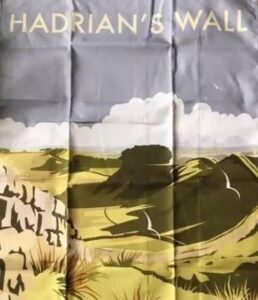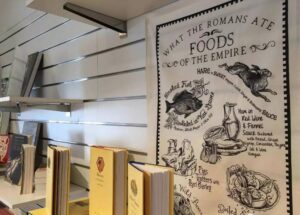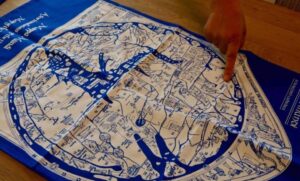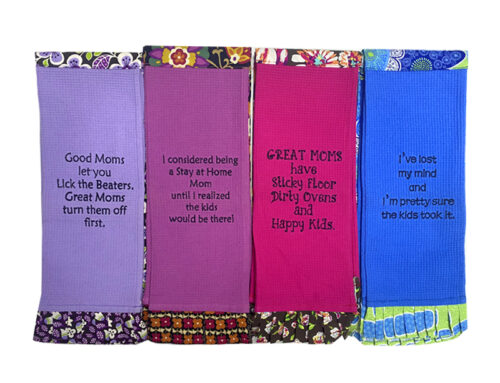In the homes of relatives and friends in the UK, if there is no dishwasher, one person will wash the dishes while the other person dries them one by one with a dry cloth and then puts them back in the cupboard. This dry cloth is called Tea Towel. It probably got its name from the cloth used to dry tea utensils.
The British tea towel is the kind you can buy in any supermarket: mostly blue and white checked or striped cloth, cotton fabric, soft and absorbent.
On this tour of the UK, I noticed the tea cloth leaving the kitchen and entering the gift shops in various scenic spots. There, all kinds of tea cloth is no longer simple, only has a function of tea cloth.
1. Hadrian’s Wall in England. Hadrian’s Wall (AD 122-421) was built by Emperor Hadrian when the Roman Empire occupied Britain. From its founding until its abandonment, it was the northwestern frontier of the British Roman Empire. This is a painting of a classic section of Hadrian’s Wall, from Brein in the 1930s to the 1950s. Cook’s style of painting.

2. The diet of the Romans who built Hadrian’s Wall: fish, rabbit, wild boar, boiled eggs, red wine, etc.

3. The world’s oldest world map. Hereford Church in England is best known for keeping the world’s oldest map of the world, a medieval (13th century) cowhide. On the map, my finger is China.

I think, if the beauty of the Great Wall, the history of the Great Wall, geographical knowledge into all kinds of exquisite “tea towels“, foreigners to see the Great Wall in China will buy. They use these “tea towels” as decorative paintings, FIG leaves, tea (meal) rags, and at the same time can acquire all kinds of knowledge about the Great Wall.



Leave A Comment